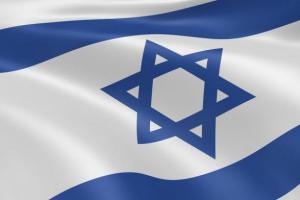In accordance with the Decree of the Government of the Russian Federation dated May 13, 2013 No. 406 “On state regulation of tariffs in the field of water supply and sanitation,” with a centralized hot water supply system in a closed system, a two-component tariff for hot water is established, consisting of “ cold water component "(rub./m3) and " component for thermal energy "(RUB/Gcal). The resource supplying organization supplying hot water makes settlements with the contractor utilities (Management Company, HOA) for 2 resources: cold water - at the tariff for the “cold water component”; thermal energy– according to the tariff for the “thermal energy component”. The value of the component for cold water is calculated by the tariff regulating body based on the tariff for cold water. The value of the component for thermal energy is determined by the tariff regulating body in accordance with methodological instructions based on the following components: tariff for thermal energy ;· maintenance costs centralized systems hot water supply in the area from the central heating points (inclusive), where cooking is carried out hot water, to the point on the border of the operational responsibility of the subscriber and the regulated organization in the event that such costs are not taken into account in the tariff for thermal energy; · the cost of thermal energy losses in pipelines in the area from the facilities where hot water is prepared, including from central heating points, including the maintenance of central heating points, to the point on the border of the operational responsibility of the subscriber and the regulated organization in the event that such losses do not taken into account when setting tariffs for thermal energy; costs associated with the transportation of hot water. Providers of utility services in accordance with the “Rules for the provision of utility services to owners and users of premises in apartment buildings and residential buildings”, approved by Decree of the Government of the Russian Federation of May 6, 2011 No. 354 (hereinafter referred to as the Rules), calculate the amount of payment for utility services for hot water supply for the volume of hot water consumed in cubic meters. In accordance with the Rules, the amount of payment (P i) for the utility service for hot water supply, in a room equipped with an individual hot water meter, is determined by the formula: P i = V i n * T k p (1), where: V i n is the volume (quantity) consumed during the billing period in i-th core or non-residential premises of a communal resource, determined according to the readings of an individual meter; T to p — tariff for a utility resource. Since the tariff for the utility resource “hot water” is set in the form of two components, the utility service provider with consumers of hot water makes payments for the components: cold water and thermal energy for hot water supply needs. Amount of thermal energy (Gcal/ m 3) for hot water supply needs per 1 m 3, as a rule, is determined by the utility service provider on the basis of general house (collective) readings of hot water meters and thermal energy in hot water. It should be noted that the utility service provider makes settlements with the resource supplying organization based on the readings of the same common house (collective) metering devices for hot water and thermal energy in hot water. The consumed amount of thermal energy in hot water in the i-room (Gcal) is determined by multiplying the amount hot water according to an individual metering device (m 3) by the specific consumption of thermal energy in hot water (Gcal/m 3). The volume of hot water determined according to an individual metering device (m 3) is multiplied by the tariff “component for cold water” (rub ./m 3) is the payment for cold water as part of hot water. The volume of thermal energy in the consumed hot water (Gcal) is multiplied by the tariff “thermal energy component” (rub./Gcal) - this is the payment for thermal energy as part of hot water water. In accordance with the information letter of the Federal Tariff Service of Russia dated November 18, 2014 No. SZ-12713/5 “On the issue of regulating tariffs for hot water in a closed hot water supply system for 2015,” it is said that the executive authorities of the constituent entities of the Russian Federation in the field of public regulation of prices (tariffs) has the right to make a decision on the establishment of tariffs for hot water in a closed hot water supply system per 1 cubic meter. m. In this case, the calculation of the tariff for hot water (T hot water) per 1 m 3 is made according to the formula: T hot water = T hot water * (1 + K pv) + US central heating + T t/e * Q t/e (2), where :T hvs - tariff for cold (rub./cubic m);T t/e - tariff for thermal energy (rub./Gcal); K pv - coefficient taking into account water losses in closed systems heat supply from central heating points to the connection point; US central heating - specific costs for the maintenance of hot water supply systems from central heating points to the boundaries of the balance sheet of consumers (excluding losses) in the event that such costs are not taken into account in tariffs for thermal energy (power), per 1 cubic meter m;Q t/e - the amount of heat required to prepare one cubic meter of hot water (Gcal/cub. m). At the same time, the amount of heat for preparing one cubic meter of hot water (Q t/e) is determined by calculation, taking into account heat capacity, pressure, temperature, density of water, losses of thermal energy in risers and heated towel rails. Thus, the charge in the receipt for hot water depends on the form in which the regulatory authority has set the tariff for hot water: for two components (cold water and thermal energy ) or per cubic meter. In question the amounts of charges for 2 components (cold water and thermal energy) are given, but the municipality and tariffs for the components are not indicated. If we assume that hot water consumption was 10 m3, then the tariff for the “cold water component” is 331 rubles. / 10 m 3 = 33.10 rubles/m 3. If we assume that the tariff for the “thermal energy” component is 1800 rubles/Gcal, the amount of thermal energy consumed is: 1100 rubles. /1800 rub./Gcal = 0.611 Gcal, respectively, to heat 1 m 3 of hot water, the thermal energy consumption was 0.611 Gcal / 10 m 3 = 0.0611 Gcal/m 3. Chief Economist of the Yurenergo Group of Companies Isaeva T.V.
Citizens are required by law to install individual water meters in their apartments and houses. Of course, in the case where this can be done. If it is technically possible to install meters, but citizens refuse, then when calculating fees for using the resource, consumption standards with increasing coefficients are applied.
As a result, it is much more profitable to pay only for the amount that was actually consumed, without overpaying for extra cubic meters of water. And this can only be done if you have an individual meter.
The legislative framework
The provision of public services, which also includes cold and hot water supply, is regulated by the Rules approved by Government Decree No. 354. They contain formulas that are used to calculate fees for water use in apartments where meters are installed and without them.
Standards for water consumption and disposal have remained unchanged for almost 30 years. These may vary slightly depending on the type of home.
The cost of one cubic meter of water is set by the regional authorities in compliance with the standards Federal Law No. 210-FZ, regulating the application of tariffs in this area.
Cold water consumption per person without a meter
It was calculated that on average per month a person can consume 6,935 cubic meters cold water. What made up this figure? We regularly spend resources on daily needs, without which the concept of a comfortable life is impossible.
To calculate water consumption in general, both hot and cold, we took the average statistical indicators that a person needs daily for the following purposes:
- showering daily – up to 30 liters;
- washing, shaving, etc., which constitutes our daily needs, is 200 liters per week;
- the water that is collected in the toilet cistern is approximately 200 liters per day;
- bathing – 200 liters per week;
- other expenses associated with laundry, cleaning, washing dishes.
There are also losses and other costs of water that may affect the entire residential building. This includes general house needs for cleaning common areas, costs associated with unauthorized connections, leaks in the water supply system of the house and many other factors.
As a result, a decent amount comes in, from which an approximate amount of cold water was extracted. It was adopted as the consumption standard per person per month, if the housing does not have an individual meter.
This is a fairly large amount, which is difficult to cover without even saving water. But utility services have the right to increase it if necessary to cover their costs. However, it is strictly limited top bar– it should not be more than two standard sizes.
According to the standard, payment for the resource is taken from each person registered in the premises, regardless of whether he actually lives there. This also includes temporarily registered citizens. According to Clause 28 of the Decree of the Government of the Russian Federation dated December 26, 2016 No. 1498 from January 1, 2017.
About increasing factors
With absence individual meters and the availability of technical capabilities for their installation, legislators decided to use increasing factors to calculate fees for all consumed resources. This norm has been introduced since the beginning of 2017 and significantly affects the population’s expenses. On the other hand, this measure encourages citizens to install metering devices.
This applies not only to water meters, but also to meters:
Management companies must install common house appliances to control the consumption of resources throughout the house as a whole.
Formula for calculating cold and hot water without a meter
The question is often asked: If there is no water meter, how is it calculated per person in 2019?
The formulas for calculating water according to the standard are enshrined in PP No. 354 in Appendix No. 2, Section 1, paragraph 4a.
It is technically impossible to install the counter
Formula for calculating the cost of cold water for the owner or tenant of an unequipped apartment individual devices metering, if it is not technically possible to install a meter (RF PP No. 354 Chapter VI clause 42):
P = n*N*T,
- N – rate of cold water consumption per month per person,
- T – tariff established by region.
You can install a meter or the verification period has expired
The tariff for those who do not have individual meters with a multiplying factor will be 1.5 times more than the tariff for those who have meters installed. Thus, one more component will be added to the calculation formula and it will become as follows:
P = n*N*T*K,
- n – number of persons registered in the premises permanently and temporarily,
- N – rate of water consumption per month per person,
- T – tariff established by region,
- K – increasing coefficient (set at 1.5 for 2019).
Through simple calculations, it becomes clear that installing meters is quite profitable. This will make it possible to control not only the monthly consumption of the resource, but also the family’s expenses for this item.
Important: Follow the date of verification of cold and hot water meters, otherwise they will be calculated according to the standard.
Hot water consumption per person without a meter
It has been determined that a person spends more cold water than hot water. Therefore, the monthly standard for it is slightly lower and amounts to 4,745 cubic meters. At the same time, calculations are made separately for water entering the heating system.
The standard includes only actual consumption figures for each person and it is believed that no more than 140 liters of hot water are consumed daily for all his needs. The same rule applies here as with cold water, when utility companies can increase the standard no more than twice. And you need to pay according to the standard for each citizen registered in the living space.
The formula for calculating the fee for hot water is similar to the calculation for cold water using the cost of 1 cubic meter of hot water according to the regional tariff.
Note that by dividing the consumption rate of hot and cold water by 30 days in a month, we get quite serious numbers. This more than covers all possible expenses, so meters will help significantly save your family’s water costs. This is especially true for those who have a fairly large family living and registered in their apartment.
Standards and tariffs for water consumption by city for 2019
The above standards are average. More precise figures are established by each region independently. Moreover, depending on various factors that are present in specific house, they are a little different. The cost of one cubic meter of water is also determined by the regional authorities; it depends on the characteristics of the territory and its location.
The table shows water tariffs in force in different cities. They are applicable for multi-apartment and private buildings that are connected to hot and cold water supply networks, sewerage, and are also equipped with plumbing fixtures (toilet, sink, bathtub or shower).
| City | Cold water supply | Hot water supply | ||
| cubic meters/person | rub. for 1 m3 | cubic meters/person | rub. for 1 m3 | |
| Moscow | 6,935 | 38,06 | 4,745 | 188,53 |
| Saint Petersburg | 5,36 | 25 | 3,89 | 100 |
| Samara | 7,9 | 27,1 | 3,6 | 130,2 |
| Permian | 5,6 | 31,6 | 3,4 | 152,2 |
| Kazan | 6,73 | — | 3,44 | — |
| Novosibirsk | 5,193 | — | 3,687 | 89,11 |
| Voronezh | 5,1 | — | 3,07 | — |
| Krasnodar | 4,04 | — | 2,65 | — |
| Chelyabinsk | 4,25 | — | 3,11 | — |
| Ekatermnburg | 5,62 | — | 5,04 | — |
| Ufa | 6,356 | 12,15 | 2,582 | 57,2 |
| Rostov-on-Don | 6,5 | — | — | — |
| Omsk | 3,510 | — | 5,472 | — |
Please note that prices may vary depending on the resource supplying organization. For each of them, tariffs are approved separately.
Of course, installing water meters helps save money. Most residents believe that installing such devices is economically feasible.
In contact with
How to correctly calculate meter readings?
So, meters are installed in the apartment. To calculate the volume of water consumed for a certain period (month), look at the apartment payment receipt for the last month and write off the latest readings from it.
Some management companies now enter this figure directly into the payment document. If this is your first payment after installing water meters, the previous indicator is zeros.
Now let's learn how to take accounting readings. The scale of modern meters gives us 8 digits. The first five of them are black, and the last 3 are red.
Since the corresponding columns of the payment document reflect the number of cubes of either cold or hot water spent, pay attention to the black indicators. These are the ones that need to be written down on the receipt. Indicators of red numbers - liters of water spent by your family are not indicated.
Water meter readings are taken at the end of each billing period (month). Meter data can be transmitted by telephone or via the Internet (in an electronic document) to a specialized organization.
Note: when transmitting water meter readings, the numbers that your meter is currently showing, as well as the previous value, which is written on the receipt for the last month, are indicated.
Legal justification for charging for water supply
 Management companies count water according to meters, based on Government Resolution Russian Federation No. 354, adopted on 05/06/2011 and valid from the fall of 2012 until now.
Management companies count water according to meters, based on Government Resolution Russian Federation No. 354, adopted on 05/06/2011 and valid from the fall of 2012 until now.
These legislative Rules, in comparison with the old ones, are fairer, but are still far from perfect.
Payment for water by meters now consists of several components, taking into account:
- The readings of the meter scale located in a certain apartment, installed to calculate the amount of cold resource consumed this month.
- Readings from a meter located in a specific apartment, installed to calculate the amount of hot resource consumed this month.
- Readings from the device installed in your home (in basement), set to calculate the amount of cold resource spent by all residents.
- Readings from a device installed in your home (in the basement), installed to calculate the amount of hot resource consumed by all residents.
- A share consisting of your apartment in a house. It is taken into account when determining the amount spent on the needs of the entire house (the so-called “general house needs”).
- The share that corresponds to your apartment in the house. It is also taken into account when determining the hot water spent for the needs of the entire house (the same so-called “general house needs”).
The first two components of the list are the consumed water resource, the volume of which depends only on you and the size of your family’s needs. The remaining items consist of the actual needs of the entire house, for example, wet cleaning of stairs and apartment areas.
And the “lion’s” share of general house expenses is overexpenditure resulting from riser leaks, unscrupulous residents who incorrectly indicate the cubic meters they spent or live in the house, use communications, but are not registered at their place of residence.
How to calculate water charges
 It is possible to calculate the costs associated with water consumption by multiplying the volume spent by the corresponding tariff indicators in a particular locality.
It is possible to calculate the costs associated with water consumption by multiplying the volume spent by the corresponding tariff indicators in a particular locality.
According to the volumes of water consumption indicated by you according to the indications apartment meters the cost of payment for the sewerage service, which includes drainage, is also calculated. Wastewater.
Helpful information: You can find out the established and current tariff rates for today by calling your management company. The same information may be contained on the payment document itself.
Calculation of general house costs for cold water
 This value is calculated quite complicatedly, using formulas that make no sense to indicate. We only note that to calculate this size take into account:
This value is calculated quite complicatedly, using formulas that make no sense to indicate. We only note that to calculate this size take into account:
- The amount in cubes of cold water that was spent by consumers over a certain period, if general house water meters are installed in the house, the volume spent by both residents and those who own non-residential premises is taken into account.
- Hot water, which was spent by consumers over a certain period, if the house has communal water meters, taking into account the volume spent by both residents and those who own non-residential premises.
- The amount in cubes of cold water used for utilities such as heating.
- The area of all premises in your house, this means both residential and non-residential apartments.
- The area of the apartment you use in this house.
So, this formula involves calculating the overexpenditure of the resource used in comparison with the calculated standards for your home.
As discussed above, overspending typically includes:
- Possible leakage from riser pipes.
- Use of water by non-registered residents.
- The “cunning” of neighbors who indicate the wrong number of cubes on the payment slip.
In accordance with the Rules specified in the article, the owners of apartments and non-residential premises will pay for overused water, in proportion to the occupied area.
Calculation of general house costs for hot water
 There is a similar formula that helps calculate overused hot water. The same values are taken into account, only related to water supply hot water.
There is a similar formula that helps calculate overused hot water. The same values are taken into account, only related to water supply hot water.
However, our Government took care of citizens burdened with utility bills, and in 2013 established consumption standards for general household needs.
These norms restrain the “appetites” of management companies and are developed independently at the local level. To find out their values, contact your management company in writing.
Limits on general household needs
 According to paragraph 44 of the Decree of the Government of the Russian Federation of April 16, 2013, the volume of general household needs (CHN) should not exceed the standard consumption established by local authorities.
According to paragraph 44 of the Decree of the Government of the Russian Federation of April 16, 2013, the volume of general household needs (CHN) should not exceed the standard consumption established by local authorities.
It is not possible to charge you for payment for the volume of general household consumption that exceeds the established standard.
Again, if the water supply contract is not concluded with a resource supply company, for example, with Vodokanal. If there is an agreement with the latter, ODN will be paid in full.
In conclusion, I would like to draw your attention to the fact that in some localities they establish a fixed minimum payment that must be paid, regardless of whether you actually spent it or not.
It is taken into account that in the event of an overpayment in a certain month for what was not actually spent, this overpayment will be offset in the next reporting period. And rightly so.
If you are not a resident of a high-rise building, but own a house in the village, remember that payment is calculated using a similar method, according to the current water supply tariff.
Look video lesson on how to take water meter readings correctly:
You may also be interested
When approaching the issue of installing a water meter, owners will have to solve many other problems, among which the registration of this device should be highlighted. When this issue is resolved, the owner gets the opportunity to operate the water meter. In this case, someone may encounter certain difficulties regarding the procedure for paying by the meter, as well as the scheme for calculating water consumption.
How to take readings from the meter?
 The device has 5 black and 3 red divisions. Let's say, at the time of installation of the device, the following information was provided on it: 00000174. The last three digits imply the volume of liters of water that was consumed. Everyone knows that when taking readings from the meter, they are taken into account in cubic meters. For this reason, the time to pay for water has not yet come. In other words, data is taken from the device when it shows the first five digits. Therefore, at least a month must pass before the necessary indicators can be obtained.
The device has 5 black and 3 red divisions. Let's say, at the time of installation of the device, the following information was provided on it: 00000174. The last three digits imply the volume of liters of water that was consumed. Everyone knows that when taking readings from the meter, they are taken into account in cubic meters. For this reason, the time to pay for water has not yet come. In other words, data is taken from the device when it shows the first five digits. Therefore, at least a month must pass before the necessary indicators can be obtained.
A month later, you need to look at the device again: there will be other data - 00001174. Considering that there are more than three numbers, readings can be taken. After performing simple calculations, it will become clear that the water consumption per month was just over one cubic meter of water. When contacting the management company with the collected data, you should keep in mind that you will have to pay for the entire amount only based on water consumed. After another month, the water meter will have new readings: 00012566. It is easy to understand that over the past month you have used 12 cubic meters. If we perform simple operations 12-1=11, we get that this month you will need to pay for 11 cubic meters.
Calculation of water consumption by meter
To determine how much you will need to pay for your water consumption, you need to know the following:
- meter readings;
- current tariffs for hot and cold water.
When the water meter is installed in your apartment, you need to remember or record its readings installed at that moment. You will need to transfer this data to the management company.
When another month has passed, you need to take readings again, calculate the difference, and report the result to the organization.
Calculation rules
 If you want to determine the amount to pay yourself, you must use the tariff table. Please note that rates are subject to change every year. In addition to this, you need to keep in mind that the decision to increase or decrease them is made by the city administration. For this reason, in the future you should check from time to time from the management company whether they remain the same.
If you want to determine the amount to pay yourself, you must use the tariff table. Please note that rates are subject to change every year. In addition to this, you need to keep in mind that the decision to increase or decrease them is made by the city administration. For this reason, in the future you should check from time to time from the management company whether they remain the same.
To calculate hot water consumption, you need water meter data multiply by current tariff. This will allow you to find out the amount to pay for consumed water in the current month. Calculation of cold water is carried out according to the same scheme.
Keep in mind that some cities have a minimum that requires payment each month. Therefore, if your water consumption is less than this minimum, say 10 liters with a minimum of 1.5 cubic meters, then you will still have to pay for all 1.5 cubic meters. However, when it comes time to pay for water next month, your overpayment will be taken into account, as a result your water costs will decrease slightly.
Those who live in rural areas should not worry too much about the payment scheme for water consumption. The fact is that in villages and villages a similar procedure for paying for water applies. Differences can only be associated with tariffs, which you can ask the management company about in advance.
Procedure for paying for water by meter
The payment method for water supply services requires regular provision of meter data to Unified information and settlement center. This can be done in several ways:

After the payment center employees have calculated the amount due, you will receive the corresponding payment document. A similar procedure is carried out every month, and the consumer does not need to personally contact the settlement center. Please be aware that the building maintenance directorate may periodically check the accuracy of the meter readings you provide.
Keep in mind that if readings are taken from a water meter installed in a communal apartment, then the amount that must be paid for the consumed water should be divided equally between all registered residents. If there are several water meters in the apartment, you need to take readings from each of them separately and provide them to the settlement center. Consumers are prohibited from making any changes to the operation of the water meter to reduce the readings it gives, as in this case they will have to pay a fine.
Checking the correctness of the readings
Sometimes a situation may arise when the meter readings do not correspond to the real ones. You can verify how correctly the device works as follows. First you need to write down the meanings of the three red numbers. After this, you need to take a 10-liter bucket, pour water into it and pour it out. This must be done three times. Next you should look at the counter. If the water meter readings show that the amount of water used exceeds or falls short of 30 liters, then we can conclude that the device should check for correct operation.
Conclusion
Today, in almost every apartment you can find such a device as a water meter. Using a water meter, the owner can keep track of the amount of water consumed, which allows him to save a lot on paying for it. However, not every owner, after installation, has an idea of how to calculate the amount to be paid for consumed water. The calculation method itself is quite simple, so you don’t need any specific knowledge to understand this process. Something else is more important. Over time, certain water meter models may show incorrect data, which can result in extremely large savings or increased water bills.
Therefore, to avoid such situations, you should check the operation of this device from time to time, comparing the actual amount of water consumed with that shown on the water meter. This will help to immediately identify the malfunction and restore the device to operational status earlier. And you shouldn’t expect that the management company won’t find out about it. Among them, a common practice is to check the accuracy of the data provided on water consumption. Therefore, if you remain silent about such a fact, then in the future you will have to pay a rather serious fine.
In order to pay for cold and hot water supply services, data on the water used by the meter must be transferred to the appropriate authorities. Before transmitting information, you need to learn how to take readings from the water meter. We will help solve this problem.
Types of water meters
There are only two types of water meters; understanding them will not be difficult. They differ from each other in the color of the markings and inscriptions on them:
- Black or blue. The meter is designed to account for cold water.
- Red. The meter is designed to account for hot water.
The use of a red meter for cold water metering is not prohibited, so two identical meters can be located nearby at the same time. In order to take readings correctly and transfer them to the water utility service, you need to determine which meter belongs to cold and which to hot water.
How to determine which meter is cold and which is hot
If both water meters have red markings, then you should determine which one belongs to what. To do this, there are two ways to determine whether the meter belongs to a hot or cold water supply:
- Location relative to each other. According to the standard, the cold water meter should be located lower than the hot one. This condition is not mandatory, so during installation the meters can be located in a way that is convenient for the master. This can make it difficult to determine which meter is which.
- Turning on the water. To accurately determine which meter belongs to cold water, regardless of their location relative to each other, you should open the cold water tap. After opening the tap, one of the meters will begin to rotate, this will be the cold water meter.
Numbers on the meter
 Water meters have 8 rotating cells on which numbers are displayed, which constitute the meter readings necessary for the transfer of water.
Water meters have 8 rotating cells on which numbers are displayed, which constitute the meter readings necessary for the transfer of water.
The last three cells display liters of water used. The first five refer to cubic meters.
After reaching the numbers 999 on the last three cells, they are reset to zero, and the fifth cell is wound up to the number 1. As water is used, reaching the number 9 on the cell leads to the transition of the left sector to +1.
What numbers to consider when transmitting meter readings
When transmitting meter readings to the water utility service, you should record the data in the first five cells. The last three do not need to be written down, but you can round off the fifth digit to account for them.
Example. If the following data is marked on the meter: 00213 621, then the following data can be submitted to the water utility service: 00213 or the following: 00214 in favor of rounding to the nearest liter.
Water consumption accounting
If you are using a new meter, then you do not need to calculate the monthly water consumption; it is displayed in the first five cells and corresponds to cubic meters. If readings are not taken for the first time, then the previous ones should be subtracted from the new meter readings.
Example. If the following data is marked on the meter: 00213 621, and in the last reading period it was: 00208 002, then the consumption can be calculated by simple subtraction: 00214 (taking into account rounding to liters) – 00208 = 6 cubic meters.
When transmitting data about used water, the readings from the cold and hot meter are summed up, and the readings from the hot meter are indicated as water heating in cubic meters.
Example. If the water consumption according to the cold meter is 6 cubic meters. m, and hot 2 cubic meters. m, then the cold water consumption is calculated as follows: 6 cubic meters. m + 2 cu. m = 8 cu. m. Water heating is installed in a volume of 2 cubic meters. m.
Payment for sewerage is carried out for the volume of hot and cold water used together, i.e. will be 8 cubic meters. m.
Video about correct water meter readings
It is not difficult to take into account water consumption according to the meter readings yourself. The readings transmitted to the water utility should be recorded for ease of accounting for consumption in the next period.








